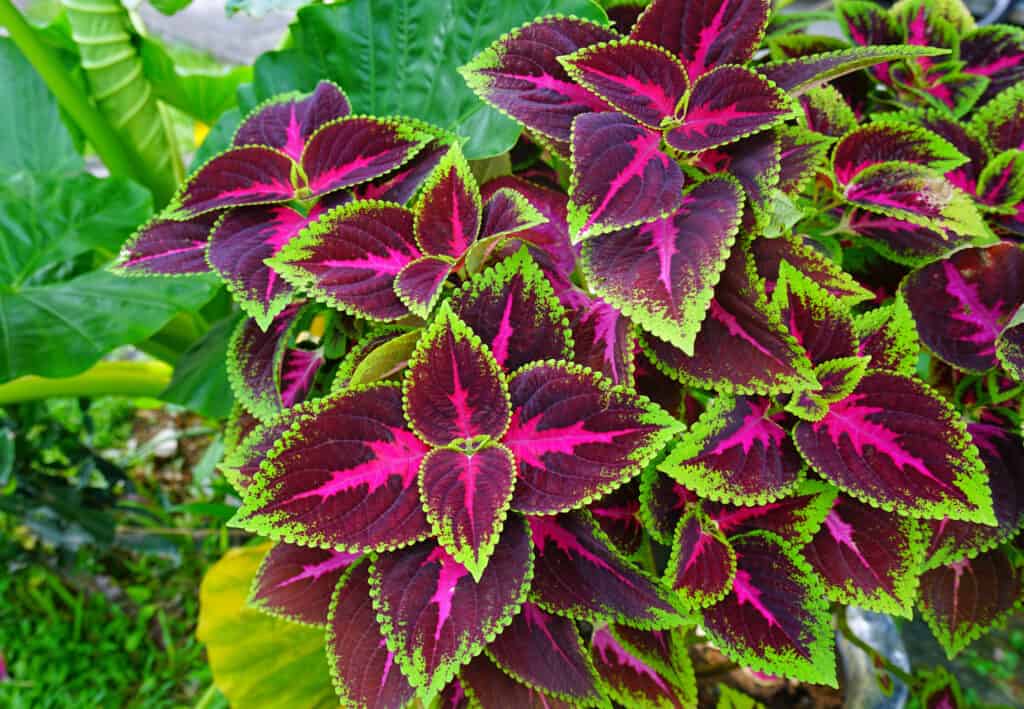Coleus is a genus of plants that thrive in tropical and subtropical areas. They need warm temperatures to grow and can easily die at low temperatures. For this reason, you must be careful when choosing where and when to plant your coleus.
In this article, we’ll go over when to plant coleus by zone. We’ll also cover some other relevant topics that we believe you’ll find helpful. Let’s get started!
What Are Plant Zones
The Plant Hardiness Map is a tool developed by the United States Department of Agriculture (USDA) to help growers and gardeners understand which plants will thrive in a given area. The map is divided into 13 zones according to their lowest average winter temperatures. Each zone is further divided into subzones that track more specific map sectors to facilitate a more precise understanding.
In the case of coleus, they can be grown as perennials in Zones 10 and above, but people consider it an annual in zones below 10. They are very unlikely to survive a cold winter; the colder the climate, the more likely the coleus will die.
When to Plant Coleus by Zone: Zones 1-5
Coleus is a warm-loving plant, and Zones 1-5 are far from its preferred habitat as they may present freezing temperatures below -50°F. Moreover, coleus is considered an annual plant in such cold zones as it has a high chance of dying in winter.
However, it is possible to plant and maintain coleus as an indoor plant if you take the necessary precautions. You can plant coleus seeds indoors approximately eight to 12 weeks before the last frost date. Be careful to get the dates right, as any frost will significantly damage the coleus. You can transplant the plant once the soil has warmed up to at least 60º. In Zones 1-5, you will likely have no problem getting the coleus outdoors in summer, but you will need to protect it from the bitter cold in winter.
When to Plant Coleus by Zone: Zones 6-9
We are slowly approaching a more comfortable scenario for coleus, but not quite yet. Coleus can withstand some spring nights outside in Zones 6-9, but you will have to take care of it if the temperature drops below 50º.
For the coleus to thrive and have time to germinate and be outside, people recommend planting it from seed eight to 12 weeks before Mother’s Day, which is when you can transplant it outdoors. However, if you are planting it outside, remember that many spring nights in Zones 6-9 will be too cold for coleus. If you are growing the coleus in a movable container, we recommend bringing it inside during spring nights.
If the coleus is planted in the landscape, you can cover it with a bucket or similar protection to protect it from cold night temperatures.

Wait to transplant your coleus outdoors until the danger of frost has passed.
©EQRoy/Shutterstock.com
When to Plant Coleus by Zone: Zones 10-13
Coleus is considered naturally perennial from Zone 10 and above, as it thrives in warm temperatures. In these zones, coleus can survive and grow outside during the winter.
As in the other regions, gardeners recommend starting coleus from seed indoors about eight to 12 weeks before the last frost date. This will allow the coleus to avoid any risk of frost in the region, however minimal. Once the danger of frost is over and temperatures are above 60º F, you can transplant your coleus outside. Since coleus enjoys these warm climates, you shouldn’t have to take too many precautions when leaving them outside.
If you know that a particularly chilly day is coming, you can cover the coleus with some material to minimize the impact of the cold. As mentioned for the other zones, you can always replant it in a container and bring it inside, although we believe this will not be necessary for these zones.
Is Coleus Annual or a Perennial?
Coleus is a tender perennial. As a plant that survives in tropical and subtropical climates, it is naturally considered a perennial in such habitats. However, its cold tolerance is so low that it is usually grown as an annual in most of the U.S.
Note that the only zones in the country where coleus can be grown as perennials are in zones 10 and above. This means that coleus can only survive naturally outside in places like South Florida. In the rest of the states, it may need special care on cold nights and during the winter, or it will die.
Is Coleus an Indoor or Outdoor Plant?
Although the coleus plant is commonly used to add brightness and color to a garden, you can also enjoy its vibrant leaves indoors. Fortunately, it is a versatile plant that responds well to being potted and will look beautiful under proper care conditions.
Many people choose to keep coleus as a permanent indoor plant, although many others place it in the garden and bring it in occasionally during the cooler seasons. The truth is, if you want to extend the life of your coleus, it’s best to keep it indoors. Coleus’ average lifespan is one year — indoors, they can survive up to four years.
Is Coleus a Sun or Shade Plant?
Generally, coleus prefers partial shade or indirect sunlight. Although they thrive in warm climates, most varieties are at risk of sunburn when exposed to full sun for many hours. Interestingly, some modern varieties have a much higher tolerance to the full sun and can withstand it all day long.
Remember that each zone and climate’s sunlight varies and affects your coleus differently. In hot and dry climates, coleus will need more shade. In cooler temperatures, coleus will need a little more sunlight exposure. It’s all about finding the perfect balance.
Usually, coleus plants need about six hours of direct sunlight in the morning and shade in the afternoon. Sunlight is critical for coleus because it helps them develop their bright colors. Just be careful not to overexpose it.
Want to learn more about this amazing plant? Check out our complete guide to the coleus here.
Up Next:
- Coleus Plant Indoors: How to Successfully Grow Coleus in a Pot
- Coleus Light Requirements: Do Coleus Prefer Sun or Shade?
- Is Coleus A Perennial Or Annual?
- Perennial vs. Annual Plants
The photo featured at the top of this post is © mimohe/Shutterstock.com
Sources
- The Spruce, Available here: https://www.thespruce.com/how-to-grow-coleus-plants-1402921
- USDA, Available here: https://planthardiness.ars.usda.gov/
- All About Gardening, Available here: https://www.allaboutgardening.com/when-to-plant-coleus-seed/
- All About Gardening, Available here: https://www.allaboutgardening.com/coleus-lifespan/
Thank you for reading! Have some feedback for us? Contact the AZ Animals editorial team.






